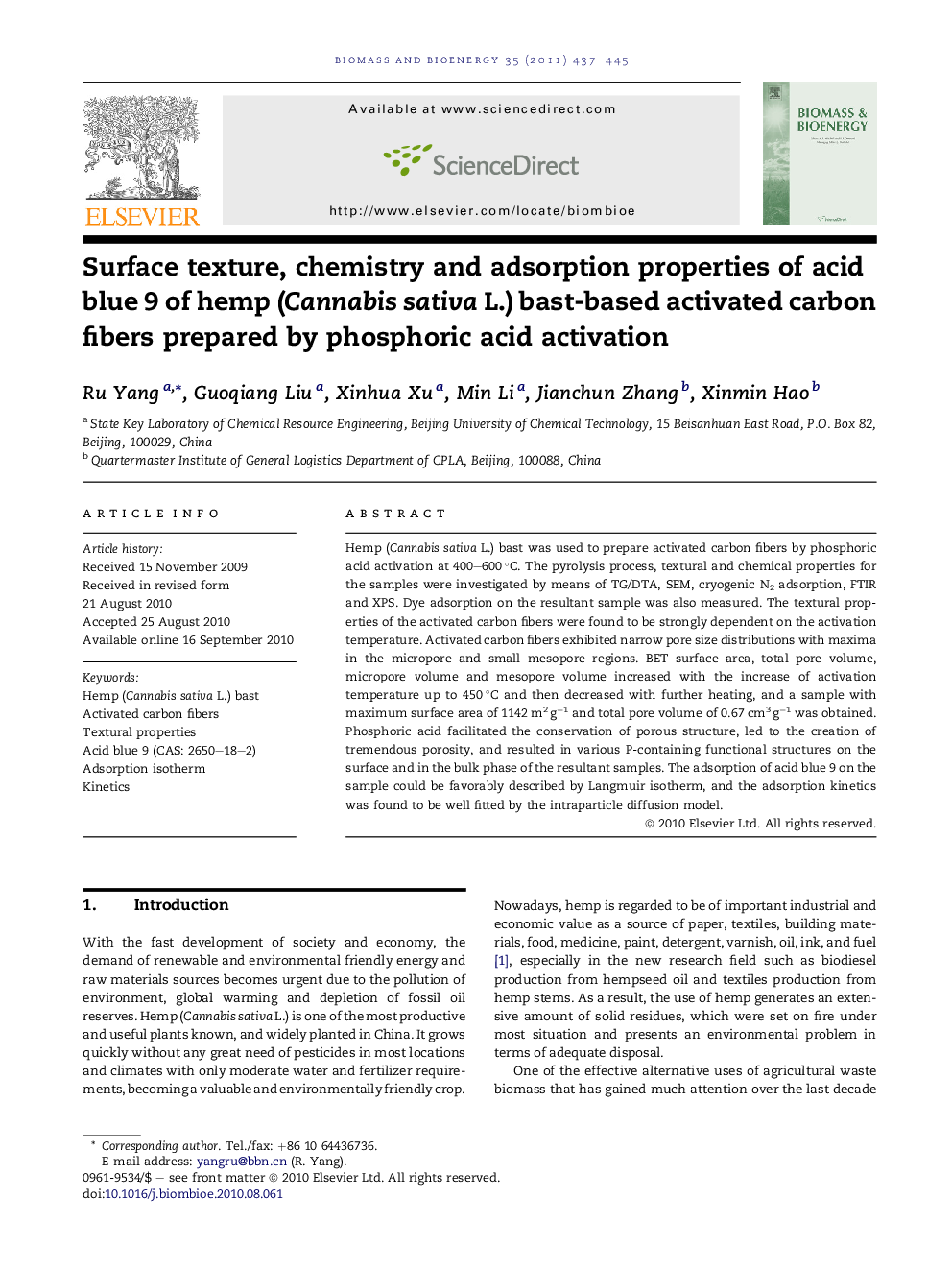| Article ID | Journal | Published Year | Pages | File Type |
|---|---|---|---|---|
| 678101 | Biomass and Bioenergy | 2011 | 9 Pages |
Hemp (Cannabis sativa L.) bast was used to prepare activated carbon fibers by phosphoric acid activation at 400–600 °C. The pyrolysis process, textural and chemical properties for the samples were investigated by means of TG/DTA, SEM, cryogenic N2 adsorption, FTIR and XPS. Dye adsorption on the resultant sample was also measured. The textural properties of the activated carbon fibers were found to be strongly dependent on the activation temperature. Activated carbon fibers exhibited narrow pore size distributions with maxima in the micropore and small mesopore regions. BET surface area, total pore volume, micropore volume and mesopore volume increased with the increase of activation temperature up to 450 °C and then decreased with further heating, and a sample with maximum surface area of 1142 m2 g−1 and total pore volume of 0.67 cm3 g−1 was obtained. Phosphoric acid facilitated the conservation of porous structure, led to the creation of tremendous porosity, and resulted in various P-containing functional structures on the surface and in the bulk phase of the resultant samples. The adsorption of acid blue 9 on the sample could be favorably described by Langmuir isotherm, and the adsorption kinetics was found to be well fitted by the intraparticle diffusion model.
